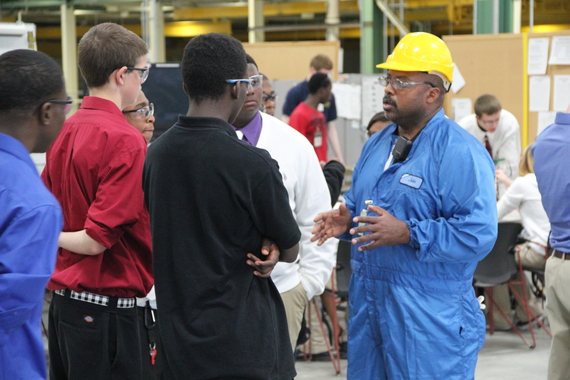The United States' STEM crisis is palpable. Over the past several years, numerous studies report similar findings: the supply of STEM-trained employees will not keep up with employers' growing demand. One new study highlights the urgency of the shortage, concluding that current job openings in STEM fields take, on average, nearly twice as long to fill as non-STEM jobs. If the United States is to remain globally competitive, employers must step in with solutions.
The U.S. Bureau of Labor Statistics estimates that by 2018, there will be a record 1.2 million unfilled jobs in STEM fields (science, technology, engineering and math). A 2012 report from the President's Council of Advisors on Science and Technology highlighted the issue, concluding that if the U.S. is to retain its historical leadership in science and technology, we must increase the number of undergraduate degrees in STEM by 34 percent annually over current rates, producing 1 million more STEM professionals over the next decade.
While these studies highlight the need for STEM professionals over the next five to 10 years, a newly published study shows that companies are struggling to find STEM-trained talent now. Last month, the Brookings Institution released its findings after analyzing millions of job vacancies: job openings in STEM-related areas are posted for twice as long as non-STEM jobs.
The Brookings study even found that STEM jobs requiring less than a bachelor's degree take longer to fill than non-STEM jobs that require a bachelor's degree. The average posting length for "associate's-level and high-school-level STEM jobs is 40 days, compared to just 37 days for non-STEM jobs requiring a bachelor's degree and 31 days for non-STEM jobs requiring an associate's degree." The National Association of Manufacturers reports that this STEM skills gap is so severe that there are approximately 600,000 unfilled jobs due to a lack of skilled workers.
It is becoming increasingly clear that business and industry must share the responsibility for educating and training the future workforce. Chevron and Lockheed Martin, two of the world's leading employers of scientists and engineers, have invested millions of dollars into STEM education across the U.S., funding Project Lead The Way (PLTW) programs at the elementary, middle and high school levels. They've realized that they can't wait for students to develop an interest in STEM. They have to help spark it, and PLTW's K-12 STEM education programs and teacher professional development, in place at more than 6,000 schools across the U.S., are designed to do just that.
Another PLTW partner has taken a different, yet very effective, approach to training its workforce. A human resources recruiter for Toyota says that historically, the auto manufacturer has filled vacancies by relying on external hires, internal team members who have obtained training through professional development programs, transfers from other Toyota facilities, and graduates from traditional post-secondary technical programs. She says it takes four months or more to fill skilled technician positions that come with generous benefit and salary packages.
In 2009, however, leaders at Toyota took their workforce needs into their own hands with the creation of the Advanced Manufacturing Technician (AMT) program. Today, in partnership with PLTW and local community colleges, Toyota recruits high school students into this two-year work/study program, in which students earn an associate's degree while training in a Toyota facility, learning the skills and tools they need to be a skilled technician. Upon completion of the AMT program, 90 percent of the students are offered an internship with Toyota, and 95 percent of those interns are offered full-time positions as skilled technicians.
The program has been so successful that Toyota is implementing it in all of its North American production facilities. Dennis Parker, assistant manager at Toyota's North American Production Support Center in Georgetown, Kentucky, and director of the AMT programs, says early numbers indicate that the majority of Toyota's future skilled technician hires will come from the AMT program.
It is critical that we take America's skills crisis into our own hands. We have the opportunity to change course by engaging students in STEM learning and training the next generation workforce that America will rely on. Early adopters of this strategy, like Chevron, Lockheed Martin and Toyota, are reaping the benefits.
Dr. Vince Bertram is the president and CEO of Project Lead The Way, a national nonprofit organization dedicated to developing high-quality STEM curriculum and teacher training. PLTW programs are used in over 6,000 schools across the United States. Connect with Dr. Bertram on Twitter at @vincebertram.

